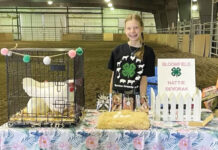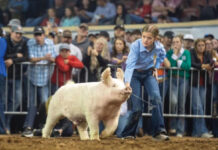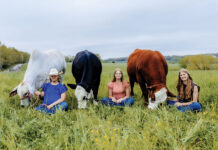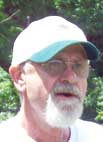
Andrew Chandler helps Twin Willow Farms find success in the Red Angus industry
SPRINGFIELD, MO. – When Andrew Chandler started working at Twin Willow Farms Red Angus, the ranch had already been in operation for several years. The decision to focus primarily on Red Angus cattle had already been made and the company’s course set before he joined six years ago.
Yet, in the time Chandler has been the Farm Manager, he’s watched Twin Willow Farms, a registered Red Angus feedstock operation in Springfield, Missouri, grow and prosper.
Twin Willow Farms, LLC is owned by Bud and Melissa Thomas and is based out of Springfield, Missouri. After growing up farming and backed by four generations of family raising livestock, Bud got into the purebred industry in 1984. He started Twin Willow Farms back in 2013 when he and a business partner made the decision to buy each other out of the partnership in their Limousin breed cattle. When his former partner went with the Limousin breed, Thomas decided to hook his wagon to Red Angus instead. The decision to focus on Red Angus has paid off for Twin Willow. Located in the Ozarks grasslands, the ranch has close to 100 purebreds.
“After studying the Red Angus breed for several years, and being impressed by their functionality and phenotype, as well as efficiency and carcass data, we began raising purebred Red Angus cattle on our farm,” Thomas posted. “We particularly like the animals’ docility, and I also wanted the association of a breed that was on the right track and could go out in the pasture and work without having to back a feed truck up to the barn to sustain them, as well as having the carcass ability to grade out in the packing plant. I also like the red hided cattle and see a difference when the heat of summer is going on, that the red cattle seem to take the heat a little easier than the black cattle do, especially on Missouri fescue.”
When asked about the farms success, Andrew comments, “It’s grown exponentially,” he continues, “Our market has expanded throughout the Midwest and we’ve even sold cattle as far north as Maryland down to Texas and a few out west as well. So, our market’s grown exponentially. Our bull market has taken off. Our commercial bull buyers come back to us. We raise bulls that are good-footed, have some muscle and some body, and are reproductively sound. And we’ve seen a lot of repeat customers come back year after year.”

“We market show heifers to exhibitors around the country,” Andrew said. “We market bred heifers private treaty, and we market our bulls privately as well to many commercial cattleman. Our breed of cattle is very sought after in many facets of the industry. From our Red Angus bulls sold to commercial cattlemen all the way down to our Red Angus show heifers marketed to junior exhibitors for the show ring, and again, commercial cattlemen buying our red heifers as replacements.”
The standards Twin Willow Farms has set for their cattle are another reason they have a flow of repeat customers.
“The biggest things for us are foot quality and efficiency,” Andrew said. “Growth, efficiency, reproduction efficiency, things along those lines, that’s what we look for first. Then we select the majority of our cattle and the genetics that we use based on phenotype. Those cattle have to be appealing to go along with being efficient, easy, docile kind of cattle.”
While Twin Willow Farms has found a winning strategy when it comes to genetics, it doesn’t mean they are not always looking to improve.
“When we find genetics that are consistent, that work for our program, we’ll go ahead and use those over and over again,” said Andrew. “But we’re always implementing new genetics, whether it be a new purchase or semen. We primarily are all AI (artificial insemination) and embryos. We use visual AI and embryo transfer in our program as well. So that helps us a bunch to get to the point to make the cattle that we like.”
Because of their location near a city center, Andrew doesn’t envision the farm will grow much bigger. Due to space, they are pretty locked into keeping their herd around 100 head annually.
“We’re very close to the city of Springfield. So we’re looking at probably staying about the same,” Andrew said. “Pastureland around us is getting harder to come by with all the development from the city and everything growing around us. So we’ll probably stay about the same size and just continue to focus on making our cattle better and raising the kind that we like.”
Bud has posted on their website, “After having the Red Angus on the farm for a few years, we knew we had made the correct decision and have never regretted switching to them. We place a lot of emphasis on acquiring the right genetics and have purchased cattle and embryos from what I believe are several of the top breeders in the US and Canada.”








